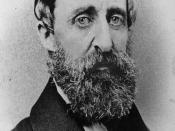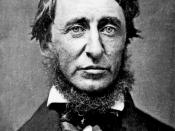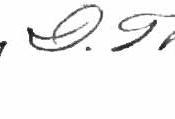In this essay the author uses different methods of personification of insects to describe the same thing - human nature. While Thoreau vividly depicts a large-scale battle between two ant species in his yard, Virginia Woolf gives a detailed and intimate account of the short life and death of a daytime moth. The difference between these two writers isn't simply style or choice of vocabulary (which is intended to set an appropriate mood in the two essays), but is mainly in their focus on certain parts of insect behavior to relay different perspectives on and ideas about human nature. What this difference amounts to is that Thoreau's description of the ants is on a large scale, as a whole, while Woolf's experience is a very personal and detailed account of the life and death of a single moth.
In her essay Virginia Woolf is sitting indoors and observing the bustling world outside of her window, when she notices a moth crossing the windowpane from corner to corner, presumably trying to get inside.
She makes a contrast between the enormous energy of the moth and it's insignificance, as it is flying around the windowpane. She carefully describes the moth's movements and is astonished by how much life and determination is inside the little moth. Eventually, the moth exhausts itself, falling down to the window sill. The force of death is slowly taking over as the moth struggles again and again to get up. This gigantic effort against such a powerful and unstoppable force amazes Woolf. The last signs of vitality fade and the moth is dead. What was Woolf's intention in describing the moth in such a dramatic manner? To answer this question I used the binary of life and death. Life is stranded with the words energy, vital light, effort,


